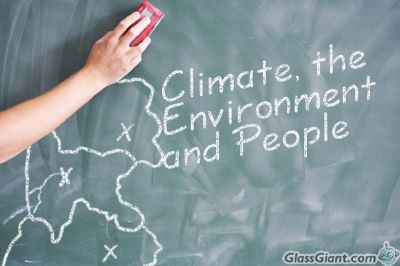Lesson objectives:
- To be able to name plants of the tropical rainforest.
- To be able to describe and explain the adaptations that these plants have made to the conditions of the forest.
You should be aware of the following plants:
Lianas
These are thick vines that loop around tree trunks to make their way up to the canopy and the sunlight. They have thick, woody stems and come in various lengths (up to 3,000 ft) and varying shapes. They begin life on the forest floor but depend on trees for support as they climb upwards towards the sunlight they need for survival. They do this by attaching themselves to trees with sucker roots or tendrils and growing with the young sapling, or they climb by winding themselves round the tree's trunk.
When they reach the top of the canopy they often spread to other trees or wrap themselves around other lianas. This network of vines gives support against strong winds to the shallow-rooted, top-heavy trees. However, when one tree falls several others may be pulled down also.
Lianas include rattan palms, philodendron and Strychnos toxifera (from which the deadly poison strychnine is obtained). Rattans, the Asian lianas, have thorny stems and can reach heights of 650 feet (200 m). They are used to make a variety of things including baskets, ropes and wicker furniture.
Epiphytes, or air plants
These plants forget about roots in the soil - they perch high up on branches.
Epiphytes grow everywhere but can be found mainly on the branches, trunks, and even the leaves of trees. The name 'epiphyte' comes from the Greek word 'epi' meaning 'upon' and 'phyton' meaning 'plant'.
Different types of epiphytes may grow on the same tree, including orchids, cacti, bromeliads, aroids, lichens, mosses and ferns. They begin their life in the canopy from seeds or spores transported there by birds or winds.
Ferns
Ferns grow very well on the forest floor as they have adapted to the shady conditions.
Bromeliads
Bromeliads are related to the pineapple family. Their thick, waxy leaves form a bowl shape in the centre for catching rainwater. Some bromeliads can hold several gallons of water and are miniature ecosystems in themselves providing homes for several creatures including frogs and their tadpoles, salamanders, snails, beetles and mosquito larvae. Those that die decompose and furnish the plant with nutrients.
Strangler Figs
Most stranglers are members of the fig family. In Spanish they are known as matapalo - 'killer tree'. The seed of the strangler fig starts life as an epiphyte high in the trees, borne by birds and monkeys which eat the fig fruit. The seedling fig sends down long roots to the ground from where it begins to surround the host tree. It grows quickly and eventually suffocates the host: when the host tree dies it leaves an enormous upright strangler with a hollow core.
By using an adult tree as its host, the strangler fig avoids competition for light and nutrients at ground level.
AdaptationsYou should be familiar with the following adaptations:
1. Buttress Roots - above-ground root system to ensure stability for the tallest trees and to increase the surface area over which the plant can draw its nutrients.
2. Drip Tips - the leaves are shaped to shed the heavy rainfall.
3. Branchless Trees - the trees put their energy into climbing upwards towards the canopy rather than growing branches at intervals along their trunks.







 Today's objectives were:
Today's objectives were: The main reasons for deforestation are:
The main reasons for deforestation are:












































